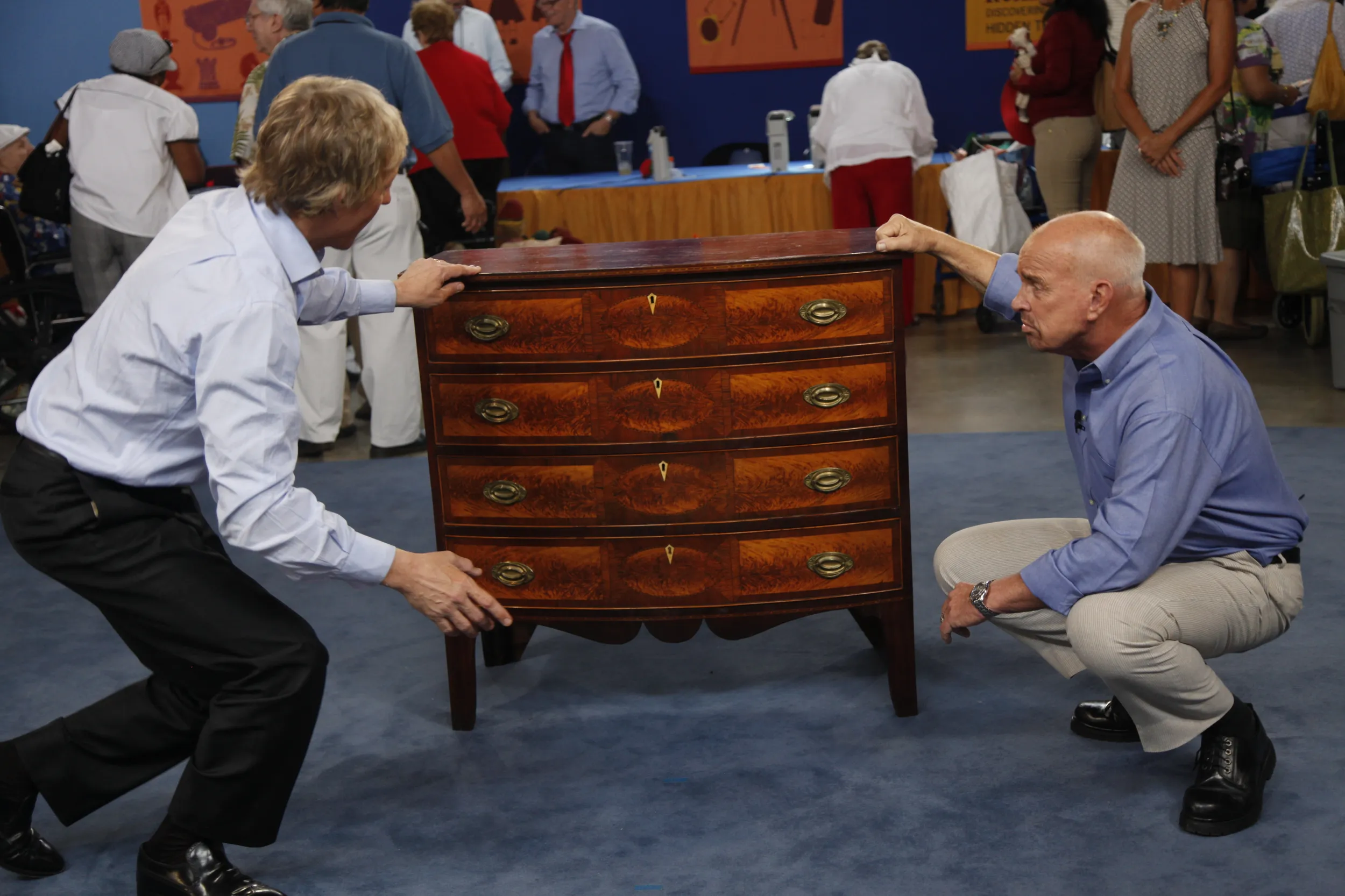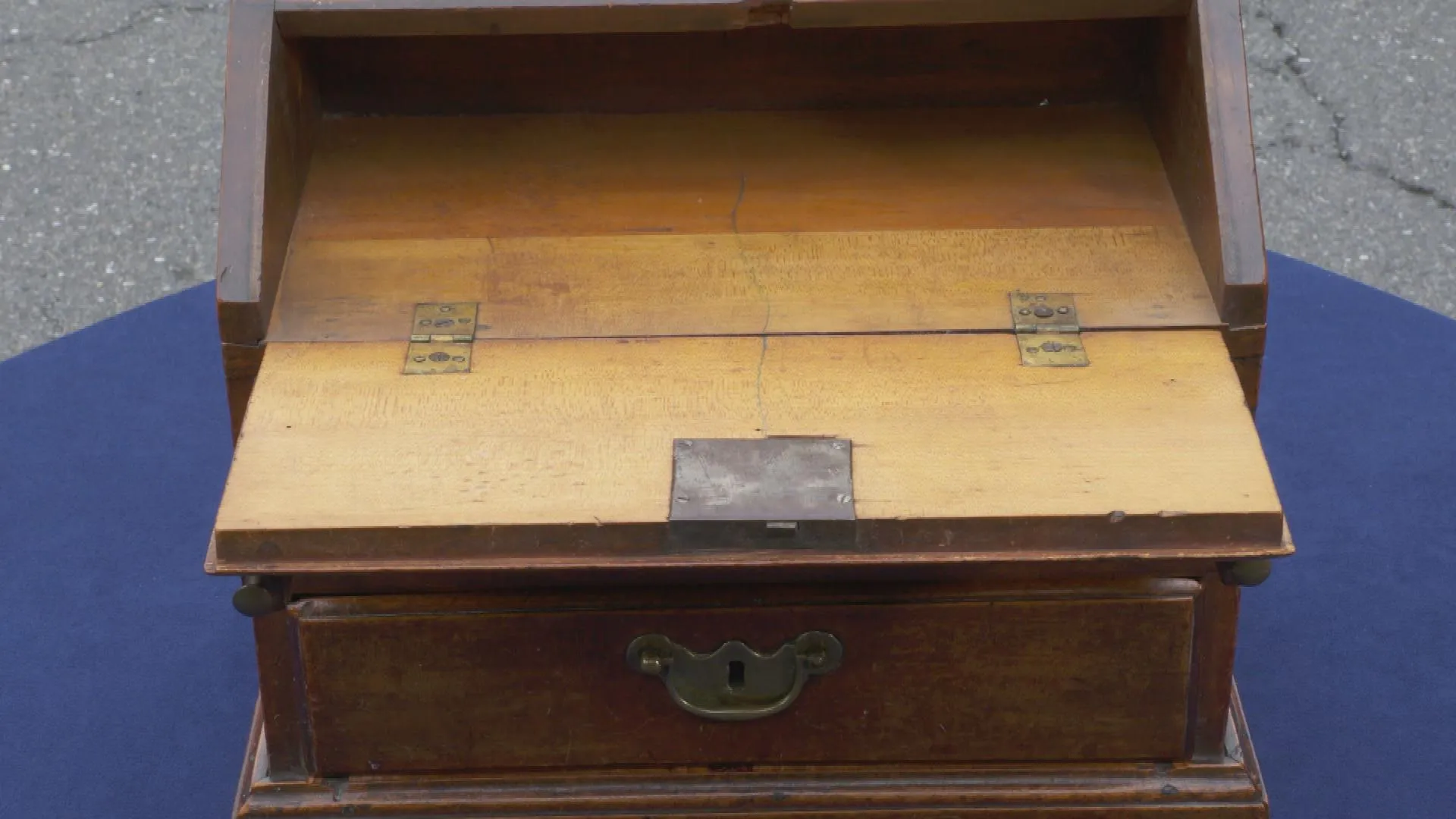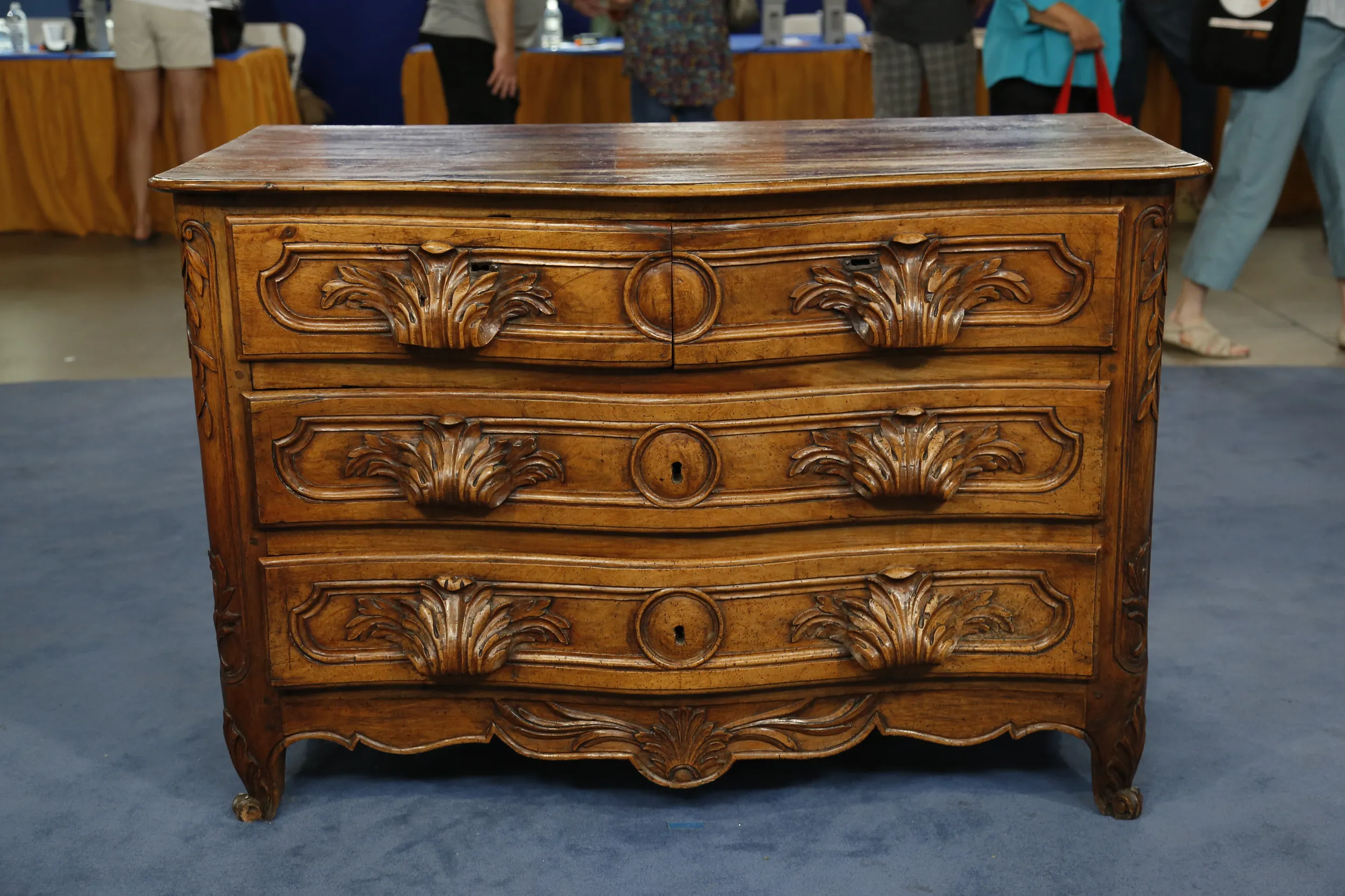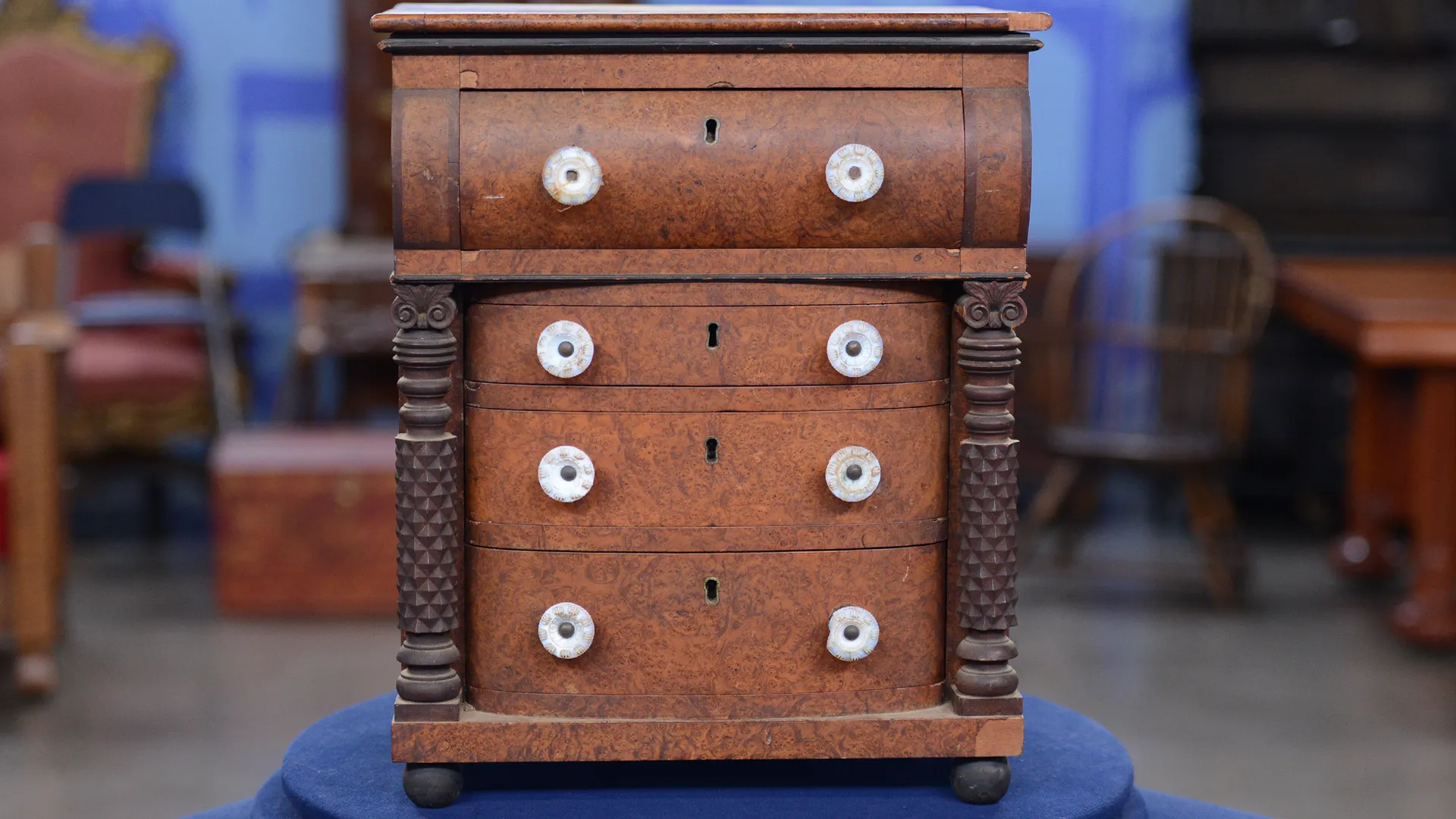GUEST: I inherited this chest about 20 years ago. My father's second wife was from Pennsylvania and she said this came down in her mother's family and that it was a very old Pennsylvania piece, but that is really all that I know about it.
APPRAISER: Did she give you any idea of how old she thought it was?
GUEST: She didn't say. My guess was that she was talking 1700s, but I didn't know.
APPRAISER: And have you ever had it appraised?
GUEST: I've never had it appraised. She told me that she had been offered $8,000 by a dealer at one point for it. However, this was very close to the end of her life and she was rather grandiose then, so she could have been offered $800, and it sort of grew.
APPRAISER: Well, it's what we call a Queen Anne figured walnut chest of drawers, and it was made in Philadelphia, between, probably, the years of 1745 and 1760.
GUEST: Oh, my!
APPRAISER: It's an exceptional chest, and there's really fabulous craftsmanship. We have this wonderful top, with what we call canted corners. Your typical chest would have a rectangular top with a molded edge...
GUEST: Right.
APPRAISER: But this has got these cut corners that are supported with the molding underneath, and the case follows with these beautiful fluted pilasters that go from top to bottom and continue to what we call a triple-faceted foot, and what's really interesting about that foot, with a little more research, we could probably figure out the maker, because this faceted foot is only done by a few cabinetmakers in Philadelphia.
GUEST: Oh! All right.
APPRAISER: And then, it's got this figured walnut, really what we kind of call tortured grain, or crotch walnut. This comes from the Y in a tree, where the...
GUEST: Oh.
APPRAISER: And that's what creates that wonderful motion in the wood. The grain will draw your eye up the chest. And then the American cabinetmakers strive for verticality in their pieces. And then if we also look at the front of the chest, you've got these period Queen Anne brasses, but what really makes this special is its size. It's what we call a diminutive chest. It's got a very narrow width, and when you start taking in inches on the width, you can start adding dollar signs. Now, that being said, there are a few condition issues with the chest. The first thing is the surface. Now, if you're a fan of the Roadshow, you know we like those dirty, grungy surfaces.
GUEST: Right.
APPRAISER: But this has been refinished. It's kind of got this shiny surface. If you look at the front of the chest, you'll notice white marks on the drawers.
GUEST: Yes.
APPRAISER: Those are what we call "halos,' and as one of my colleagues say, "Halos are great on angels, but not on furniture."
GUEST: Does that mean that it was painted at one time?
APPRAISER: It isn't. What that is is residual brass polish, so someone has put the polish on the brasses and rubbed it in, and it's worked its way into the pores of the wood.
GUEST: Oh... all right.
APPRAISER: You also have some repairs and cracks to the foot facings, but that being said, it's still a special chest. I think we can easily say, at auction, we place an estimate of $12,000 to $18,000 on this chest.
GUEST: Oh, really, on this chest? I would never have known that.
APPRAISER: If this had its original surface, we'd easily say $30,000 to $50,000.








